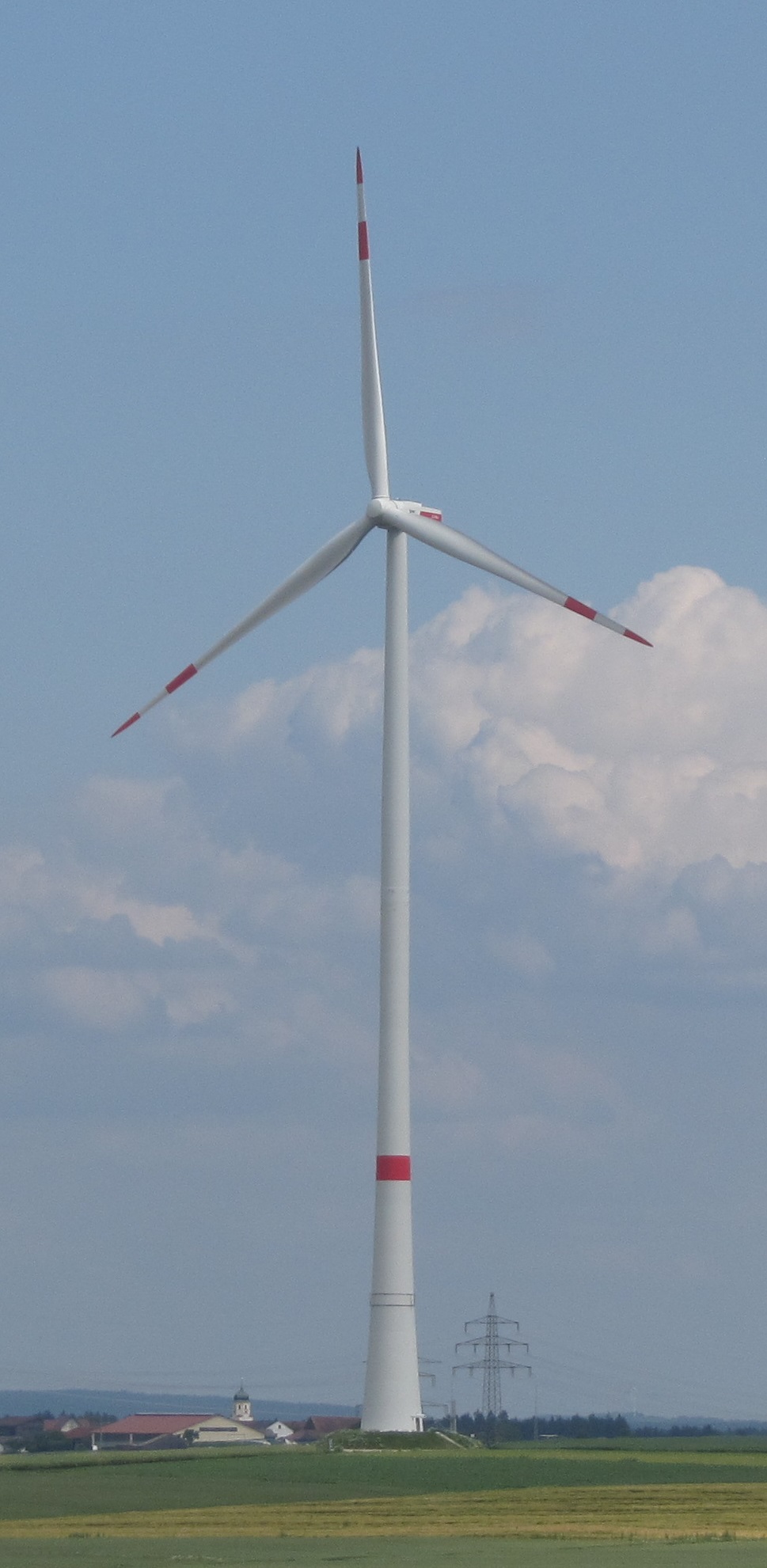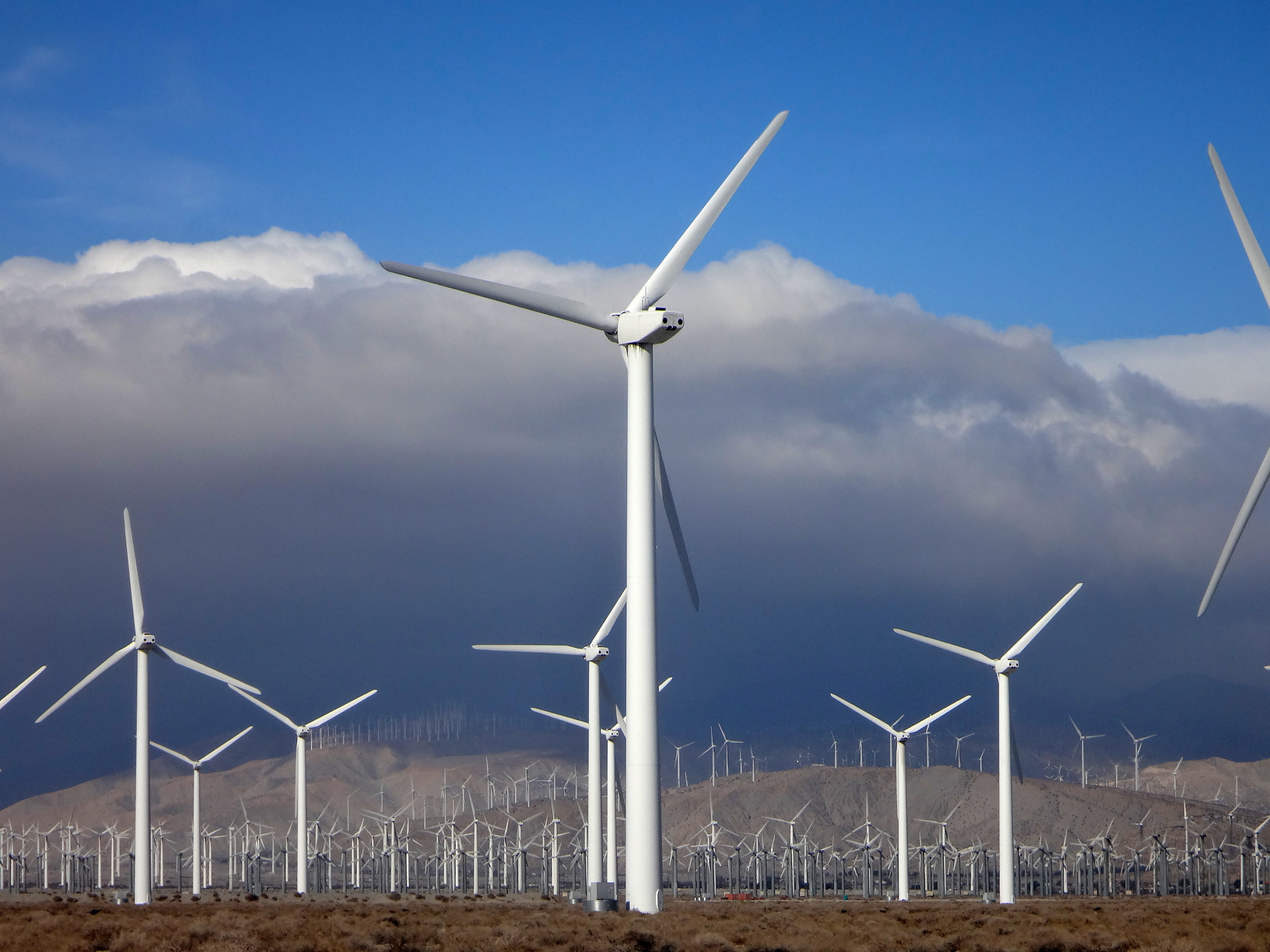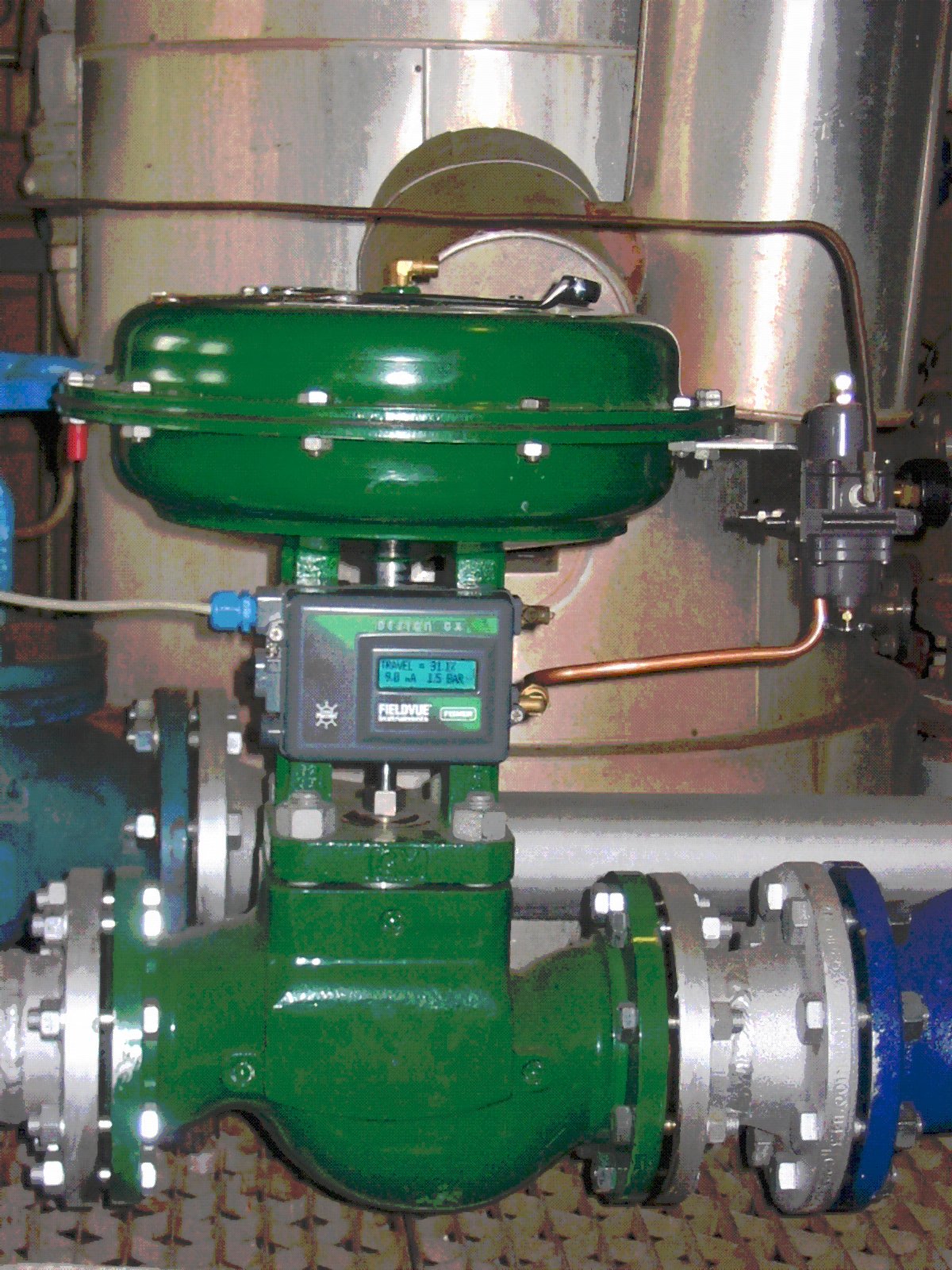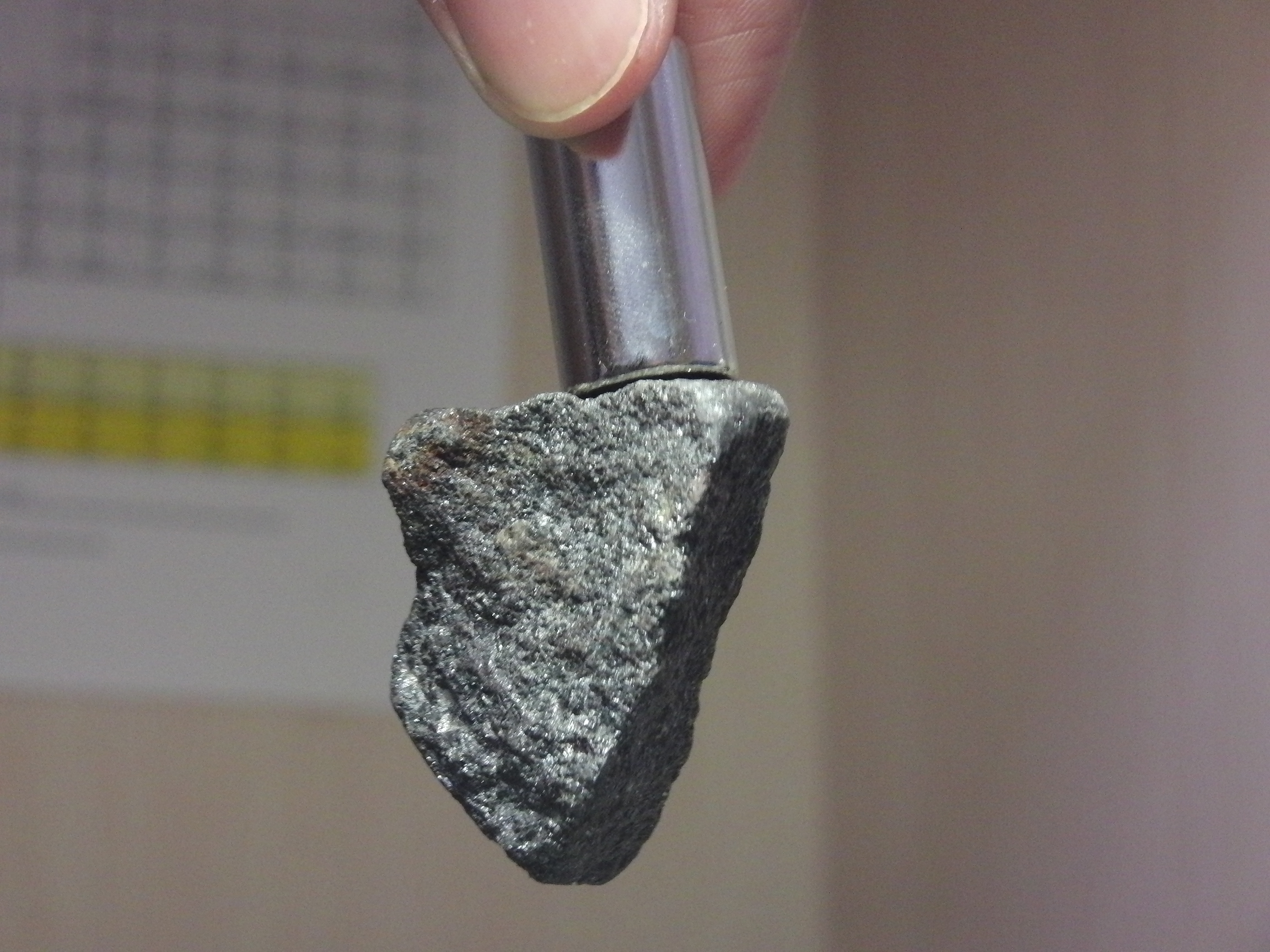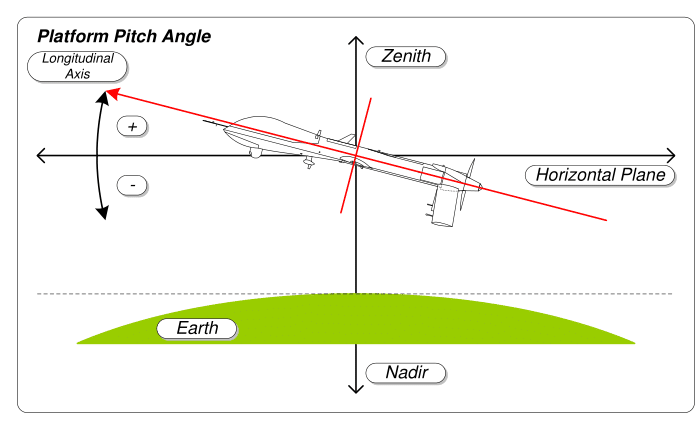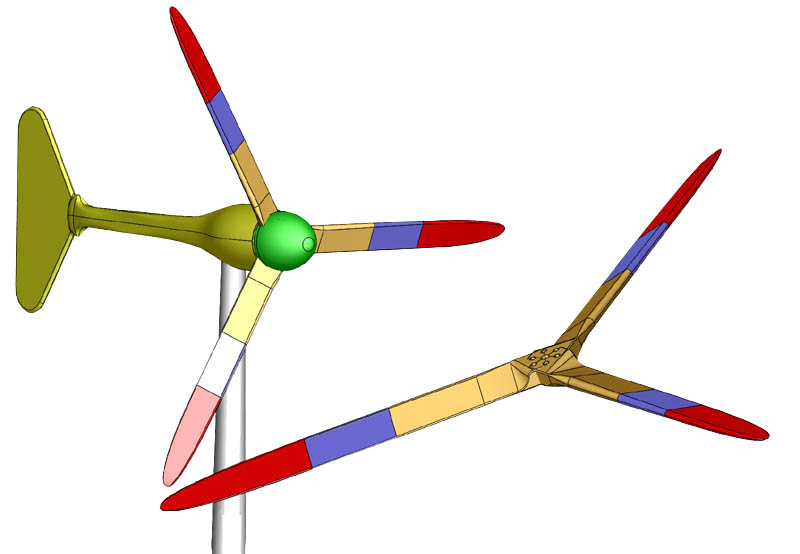|
Wind Turbine Design
Wind turbine design is the process of defining the form and configuration of a wind turbine to extract energy from the wind. An installation consists of the systems needed to capture the wind's energy, point the turbine into the wind, convert mechanical rotation into electrical power, and other systems to start, stop, and control the turbine. In 1919, German physicist Albert Betz showed that for a hypothetical ideal wind-energy extraction machine, the fundamental laws of conservation of mass and energy allowed no more than 16/27 (59.3%) of the wind's kinetic energy to be captured. This Betz' law limit can be approached by modern turbine designs which reach 70 to 80% of this theoretical limit. In addition to the blades, design of a complete wind power system must also address the hub, controls, generator, supporting structure and foundation. Turbines must also be integrated into power grids. Aerodynamics Blade shape and dimension are determined by the aerodynamic perfo ... [...More Info...] [...Related Items...] OR: [Wikipedia] [Google] [Baidu] [Amazon] |
Windpark Berching01 Verkleinert
A wind farm, also called a wind park or wind power plant, is a group of wind turbines in the same location used Wind power, to produce electricity. Wind farms vary in size from a small number of turbines to several hundred wind turbines covering an extensive area. Wind farms can be either onshore or Offshore wind power, offshore. Many of the largest operational onshore wind farms are located in China, India, and the United States. For example, the List of onshore wind farms, largest wind farm in the world, Gansu Wind Farm in China had a capacity of over 6,000 megawatt, MW by 2012,Watts, Jonathan & Huang, CecilyWinds Of Change Blow Through China As Spending On Renewable Energy Soars ''The Guardian'', 19 March 2012, revised on 20 March 2012. Retrieved 4 January 2012. with a goal of 20,000 MWFahey, JonathanIn Pictures: The World's Biggest Green Energy Projects ''Forbes'', 9 January 2010. Retrieved 19 June 2019. by 2020. As of December 2020, the 1218 MW Hornsea Wind ... [...More Info...] [...Related Items...] OR: [Wikipedia] [Google] [Baidu] [Amazon] |
Fail-safe
In engineering, a fail-safe is a design feature or practice that, in the event of a failure causes, failure of the design feature, inherently responds in a way that will cause minimal or no harm to other equipment, to the environment or to people. Unlike inherent safety to a particular hazard, a system being "fail-safe" does not mean that failure is naturally inconsequential, but rather that the system's design prevents or mitigates unsafe consequences of the system's failure. If and when a "fail-safe" system fails, it remains at least as safe as it was before the failure. Since many types of failure are possible, failure mode and effects analysis is used to examine failure situations and recommend safety design and procedures. Some systems can never be made fail-safe, as continuous availability is needed. Redundancy (engineering), Redundancy, fault tolerance, or contingency plans are used for these situations (e.g. multiple independently controlled and fuel-fed engines). Examples ... [...More Info...] [...Related Items...] OR: [Wikipedia] [Google] [Baidu] [Amazon] |
Two Reactions Theory
The reactances of synchronous machines comprise a set of characteristic constants used in the theory of synchronous machines. Technically, these constants are specified in units of the electrical reactance (ohms), although they are typically expressed in the per-unit system and thus dimensionless. Since for practically all (except for the tiniest) machines the resistance of the coils is negligibly small in comparison to the reactance, the latter can be used instead of (complex) electrical impedance, simplifying the calculations. Two reactions theory The air gap of the machines with a salient pole rotor is quite different along the pole axis (so called ''direct axis'') and in the orthogonal direction (so called ''quadrature axis''). Andre Blondel in 1899 proposed in his paper "Empirical Theory of Synchronous Generators" the two reactions theory that divided the armature magnetomotive force (MMF) into two components: the direct axis component and the quadrature axis component. Th ... [...More Info...] [...Related Items...] OR: [Wikipedia] [Google] [Baidu] [Amazon] |
Vector Control (motor)
Vector control, also called field-oriented control (FOC), is a variable-frequency drive (VFD) control method in which the stator currents of a three-phase AC motor are identified as two orthogonal components that can be visualized with a vector. One component defines the magnetic flux of the motor, the other the torque. The control system of the drive calculates the corresponding current component references from the flux and torque references given by the drive's speed control. Typically PI controller, proportional-integral (PI) controllers are used to keep the measured current components at their reference values. The pulse-width modulation of the variable-frequency drive defines the transistor switching according to the stator voltage references that are the output of the PI current controllers. FOC is used to control alternating current, AC synchronous machine, synchronous and induction motors. It was originally developed for high-performance motor applications that are required ... [...More Info...] [...Related Items...] OR: [Wikipedia] [Google] [Baidu] [Amazon] |
Synchronous Motor
A synchronous electric motor is an AC electric motor in which, at steady state, the rotation of the shaft is synchronized with the frequency of the supply current; the rotation period is exactly equal to an integer number of AC cycles. Synchronous motors use electromagnets as the stator of the motor which create a magnetic field that rotates in time with the oscillations of the current. The rotor with permanent magnets or electromagnets turns in step with the stator field at the same rate and as a result, provides the second synchronized rotating magnet field. Doubly fed synchronous motors use independently-excited multiphase AC electromagnets for both rotor and stator. Synchronous and induction motors are the most widely used AC motors. Synchronous motors rotate at a rate locked to the line frequency since they do not rely on induction to produce the rotor's magnetic field. Induction motors require '' slip'': the rotor must rotate at a frequency slightly slower than th ... [...More Info...] [...Related Items...] OR: [Wikipedia] [Google] [Baidu] [Amazon] |
Permanent Magnet
A magnet is a material or object that produces a magnetic field. This magnetic field is invisible but is responsible for the most notable property of a magnet: a force that pulls on other ferromagnetic materials, such as iron, steel, nickel, cobalt, etc. and attracts or repels other magnets. A permanent magnet is an object made from a material that is magnetized and creates its own persistent magnetic field. An everyday example is a refrigerator magnet used to hold notes on a refrigerator door. Materials that can be magnetized, which are also the ones that are strongly attracted to a magnet, are called Ferromagnetism, ferromagnetic (or ferrimagnetic). These include the elements iron, nickel and cobalt and their alloys, some alloys of rare-earth element, rare-earth metals, and some naturally occurring minerals such as lodestone. Although ferromagnetic (and ferrimagnetic) materials are the only ones attracted to a magnet strongly enough to be commonly considered magnetic, all oth ... [...More Info...] [...Related Items...] OR: [Wikipedia] [Google] [Baidu] [Amazon] |
Tip Speed Ratio
The tip-speed ratio, λ, or TSR for wind turbines is the ratio between the tangential speed of the tip of a blade and the actual speed of the wind, ''v''. The tip-speed ratio is related to efficiency, with the optimum varying with blade design. Higher tip speeds result in higher noise levels and require stronger blades due to larger centrifugal forces. :: \lambda = \frac The tip speed of the blade can be calculated as \omega \cdot R, where \omega is the rotational speed of the rotor and ''R'' is the rotor radius. Therefore, we can also write: :: \lambda = \frac, where v is the wind speed at the height of the blade hub. ''Cp''–λ curves The power coefficient, C_p, expresses what fraction of the power in the wind is being extracted by the wind turbine. It is generally assumed to be a function of both tip-speed ratio and pitch angle. Below is a plot of the variation of the power coefficient with variations in the tip-speed ratio when the pitch is held constant: The case for ... [...More Info...] [...Related Items...] OR: [Wikipedia] [Google] [Baidu] [Amazon] |
Pitch Controller
Pitch may refer to: Acoustic frequency * Pitch (music), the perceived frequency of sound including "definite pitch" and "indefinite pitch" ** Absolute pitch or "perfect pitch" ** Pitch class, a set of all pitches that are a whole number of octaves apart ** Relative pitch, the ability to identify a given musical interval between two notes * Pitch accent, a form of accentuation in speech Business * Sales pitch, a line of talk that attempts to persuade someone or something ** Pitch (filmmaking), a proposal for a film ** Elevator pitch, a very short sales presentation, allegedly short enough to be made during an elevator ride Measurement Movement about the transverse axis * Pitch angle (or pitch rotation), one of the angular degrees of freedom of any stiff body (for example a vehicle), describing rotation about the side-to-side axis ** Pitch (aviation), one of the aircraft principal axes of rotation (nose-up or nose-down angle measured from horizontal axis) ** Pitch (ship motion) ... [...More Info...] [...Related Items...] OR: [Wikipedia] [Google] [Baidu] [Amazon] |
Pitching Moment
In aerodynamics, the pitching moment on an airfoil is the Moment (physics), moment (or torque) produced by the aerodynamic force with respect to the aerodynamic center on the airfoil . The pitching moment on the wing of an airplane is part of the total moment that must be balanced using the lift on the horizontal stabilizer. More generally, a pitching moment is any moment acting on the pitch (aviation), pitch axis of a moving body. The Lift (force), lift on an airfoil is a distributed force that can be said to act at a point called the center of pressure. However, as angle of attack changes on a Camber (aerodynamics), cambered airfoil, there is Center of pressure (fluid mechanics)#Movement of center of pressure, movement of the center of pressure forward and aft. This makes analysis difficult when attempting to use the concept of the center of pressure. One of the remarkable properties of a Camber (aerodynamics), cambered airfoil is that, even though the center of pressure m ... [...More Info...] [...Related Items...] OR: [Wikipedia] [Google] [Baidu] [Amazon] |
Small Wind Turbine
Small wind turbines, also known as micro wind turbines or urban wind turbines, are wind turbines that generate electricity for Microgeneration, small-scale use. These turbines are typically smaller than those found in wind farms. Small wind turbines often have passive yaw systems as opposed to active ones. They use a Direct-drive mechanism, direct drive generator and use a tail fin to point into the wind, whereas larger turbines have Gearbox, geared powertrains that are actively pointed into the wind. They usually produce between 500 W and 10 kW, with some as small as 50 W. The Canadian Wind Energy Association considers small wind turbines to be up to 300 kW, while the IEC 61400 standard defines them as having a rotor area smaller than 200 m2 and generating voltage below 1000 Va.c. or 1500 Vd.c. Design Blades Turbine airfoil, blades for small-scale wind turbines are typically in diameter and produce 0.5-10 kW at their optimal wind speed. Most small wind tur ... [...More Info...] [...Related Items...] OR: [Wikipedia] [Google] [Baidu] [Amazon] |
Slewing Drive
The slewing drive is a gearbox that can safely hold radial and axial loads without brakes, as well as transmit a torque for rotating. The rotation can be in a single axis, or in multiple axes together. Slewing drives are made by manufacturing gearing, bearings, seals, housing, motor and other auxiliary components and assembling them into a finished gearbox. History The slewing drive is a modernized take on the worm drive mechanism, which dates back many centuries and was widely used during the Renaissance Era. Pappus of Alexandria (3rd century AD), a Greek mathematician, is credited with an early version of the endless screw, which would later evolve into the worm drive. This mechanism was also used by Leonardo da Vinci as a component in many of his designs for machines. It can also be found in the notebooks of Francesco di Giorgio of Siena. Many slewing drive concepts found prominence with the emergence of larger scale construction and engineering in the height of the Greek an ... [...More Info...] [...Related Items...] OR: [Wikipedia] [Google] [Baidu] [Amazon] |
Furl (sailing)
Furling refers to stowing a sail into a neat package after it has been ed, but leaving it still fastened in the position from which it can be set. For a sail with a boom, this usually means flaking the sail down over the boom and securing it with sail ties. The headsail of a sloop (where roller furling is not fitted) is often lashed to a guardrail or along a bowsprit. A square sail is furled by gathering it more closely to the yard than is achieved by the buntlines and clewlines and securing it to the yard with gaskets image:gaskets.jpg, Some seals and gaskets A gasket is a Seal (mechanical), mechanical seal which fills the space between two or more mating surfaces, generally to prevent leakage from or into the joined objects while under compression (physical), .... When bending a sail onto a yard, a square sail is usually furled at deck level, being tied to itself with temporary lashings, so as to provide a controllable package to haul aloft and fasten to the yard. Less commo ... [...More Info...] [...Related Items...] OR: [Wikipedia] [Google] [Baidu] [Amazon] |
